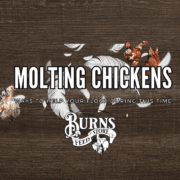Must Haves For Managing Bot Fly Season
Bot Fly Season
We’ve received feedback from our equestrian clients indicating that bot flies appear to be more prevalent this year. Here are some strategies to help address this issue.
The Problem
Bot fly eggs are typically observed in late summer and early fall when adult female flies are actively laying their eggs. The warm weather and extended daylight create ideal conditions for flies, making horses in pastures easy targets. During this period, adult females deposit tiny yellow eggs onto the horse’s coat, which the horse inadvertently ingests. The bot’s life cycle is adapted to overwinter within the horse. By laying eggs in late summer and early fall, the larvae can hatch, move into the mouth and digestive system, and then spend the winter attached to the stomach or intestinal tissues. This ensures their survival until they are excreted in manure and pupate the following spring. As summer progresses, more adults emerge from soil pupae, leading to a surge in populations, particularly from August to October, which marks their most active egg-laying period.
The Treatment
To combat this issue, utilize a deworming product that targets bot fly larvae after the first hard frost, when adults die off but larvae remain inside the horse. This timing disrupts the life cycle before the larvae can pupate in the soil. Ivermectin dewormer, which often contains a boticide, is the most popular option. Additionally, during this time, bot knives or abrasive grooming blocks can be used to remove the tiny yellow eggs from the legs and body. Remember to wear gloves or wash your hands thoroughly after egg removal.
The Source
Burns Feed Store stocks Ivermectin Paste Dewormer, as well as bot knives and grooming blocks in the grooming section.
In Summary
- Bot flies lay hundreds of eggs each summer, and their larvae migrate into the horse’s gastrointestinal tract.
- Bot fly activity peaks in late summer and fall, driven by warm weather and increasing populations, prompting females to lay numerous eggs on horses.
- Effective control involves removing eggs in the summer and deworming in the fall.
- A bot knife is a useful grooming tool for managing infestations.
Proactive grooming and parasite management can disrupt the bot fly cycle and ensure your horse remains comfortable throughout the season.






